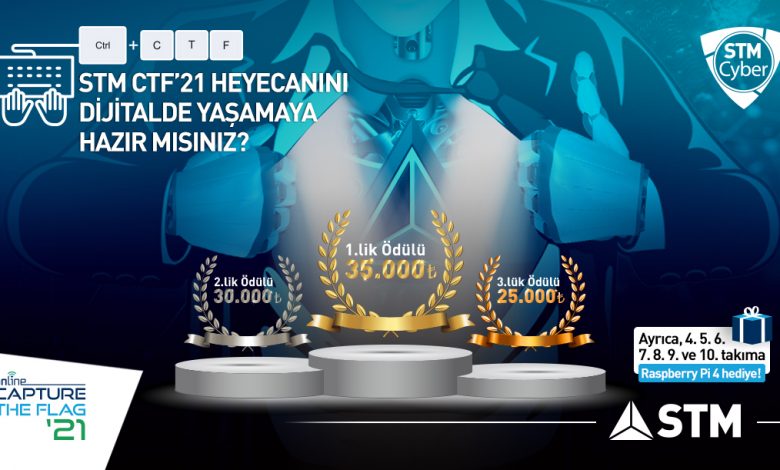STM’nin “CTF” yarışması 22 Ekim’de başlıyor

STM’nin bu yıl 7. kez düzenlediği Türkiye’nin en uzun soluklu siber güvenlik etkinliklerinden olan ‘Capture The Flag-CTF’ (Bayrağı Yakala), bu yıl T.C. Cumhurbaşkanlığı Savunma Sanayii Başkanı Prof. Dr. İsmail Demir ve STM Genel Müdürü Özgür Güleryüz’ün yapacağı açılış konuşmalarıyla 22 Ekim’de başlayacak. Teknoloji Editörü Hakkı Alkan’ın sunacağı etkinlik, meraklılarına tamamen online olarak ulaşacak.
T.C. Cumhurbaşkanlığı Savunma Sanayii Başkanlığı öncülüğünde ülkemizin savunma sanayii ve milli teknoloji hamlesinde önemli bir rol üstlenen STM Savunma Teknolojileri Mühendislik ve Ticaret A.Ş., Türkiye’nin en uzun soluklu ‘Capture The Flag-CTF‘ (Bayrağı Yakala) etkinliğinin 7.sini, bu yıl da tamamen online üzerinden kurguladı.
Açılış konuşmalarını T.C. Cumhurbaşkanlığı Savunma Sanayii Başkanı Prof. Dr. İsmail Demir ve STM Genel Müdürü Özgür Güleryüz’ün yapacağı, sunuculuğunu ise Teknoloji Editörü Hakkı Alkan’ın üstleneceği yarışma, 22-23 Ekim tarihleri arasında düzenlenecek.
90 bin TL ödül verilecek yarışmada başvurular sürüyor
Siber güvenlik alanında yenilikçi yaklaşımı ve özgün çıktılarıyla ayrışan STM’nin, bu alana yönelik farkındalık yaratmak ve insan kaynağını geliştirmek amacıyla düzenlediği CTF, her yıl siber güvenlik alanında kariyer yapmak isteyen gençlerin ve siber güvenlik araştırmacılarının ilgi odağı oluyor. CTF’de yarışmacılar, siber güvenlik zafiyetlerini bulmak ve sistemleri ele geçirmek için mücadele ediyor. Katılımcı sayısı sınırlaması olmaksızın gerçekleştirilecek bu yılki yarışmada toplam ödül ise 90 bin TL olacak. 23 Ekim akşamı düzenlenecek ödül töreninde, birinci gelen takım 35 bin TL, ikinci takım 30 Bin TL, üçüncü takım 25 bin TL’lik para ödülü kazanacak. Yarışmada ilk üçün dışındaki ilk on takım ise Raspberry Pi 4’ün sahibi olacak.
Başvuruların https://ctf.stm.com.tr/ adresinden devam ettiği etkinlikle ilgili detaylar ve 22-23 Ekim tarihlerinde gerçekleştirilecek olan canlı yayınlar; @StmCTF, @StmDefence, @StmCyber Twitter ile @StmDefence YouTube hesaplarından takip edilebilecek.
Yarışma boyunca https://ctf.stm.com.tr/ adresinde gerçekleştirilecek olan quizlere katılım sağlayıp sorulara doğru cevap verenler arasında yapılacak çekilişin sonunda; birinciye Ipad, ikinciye Iwatch, üçüncüye ise Airpod hediye edilecek.





